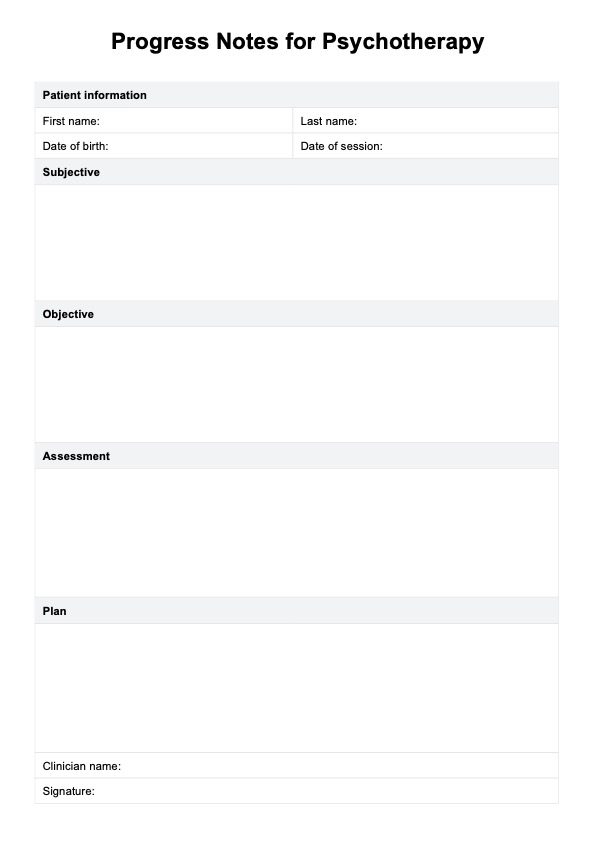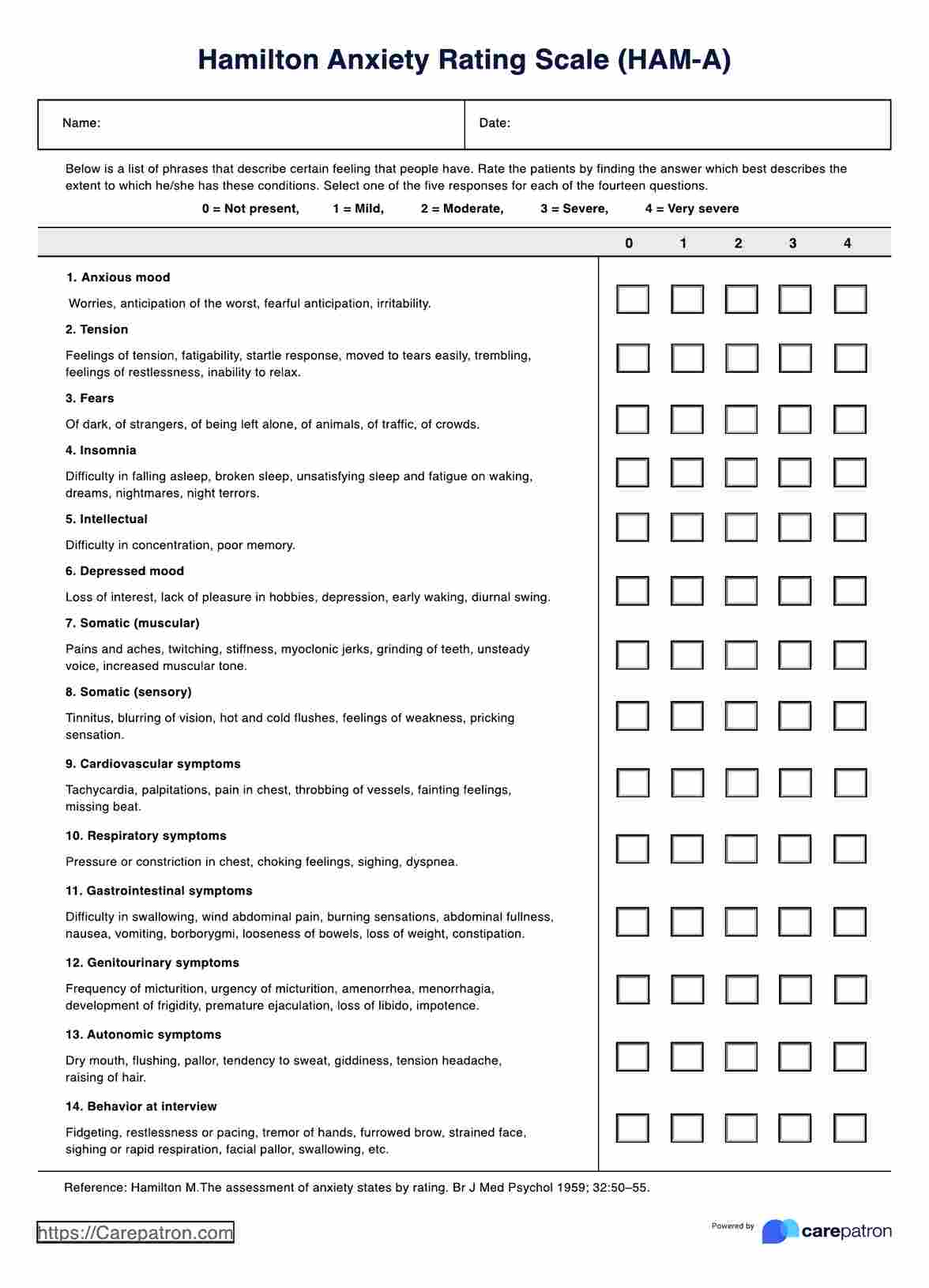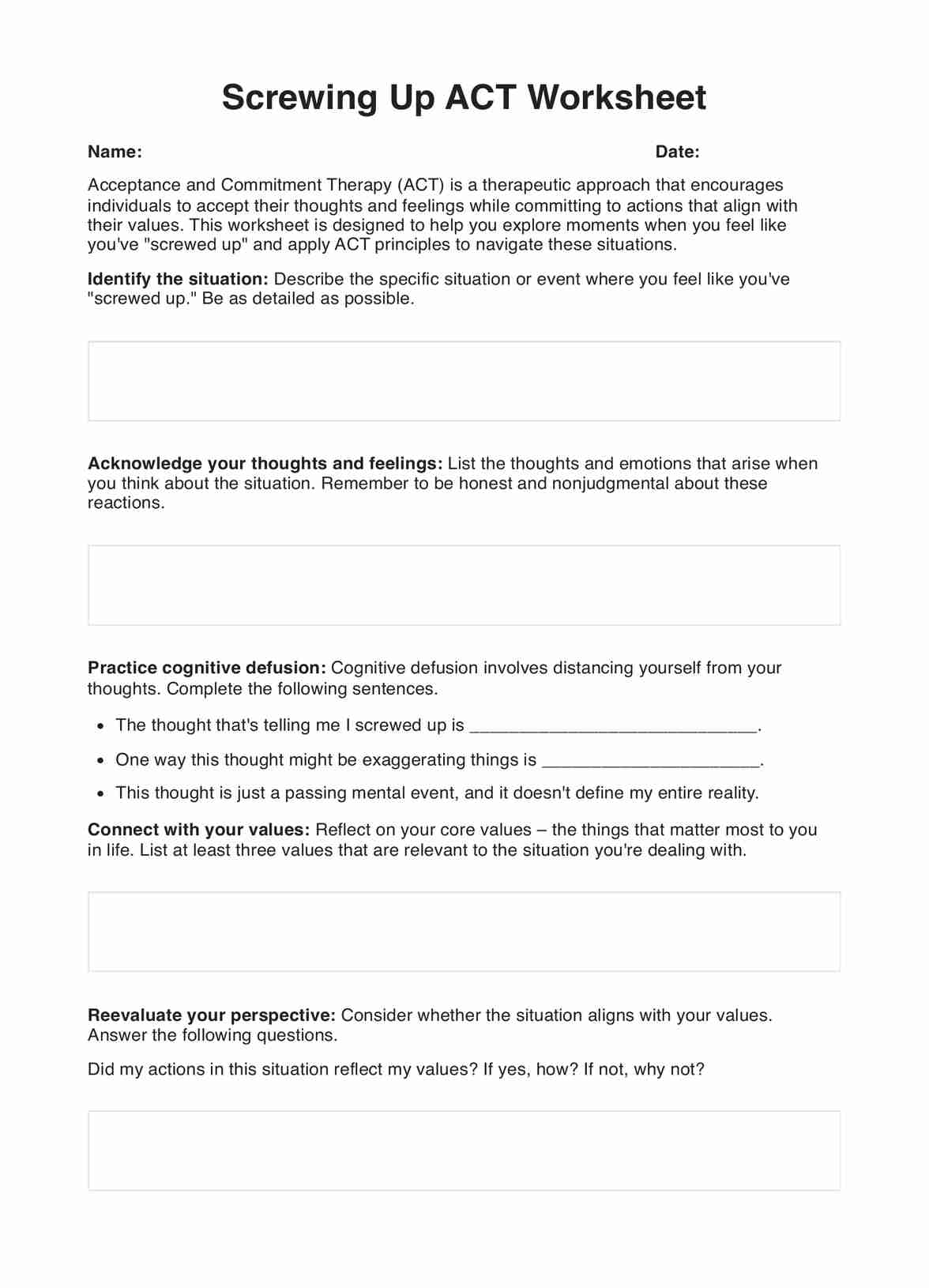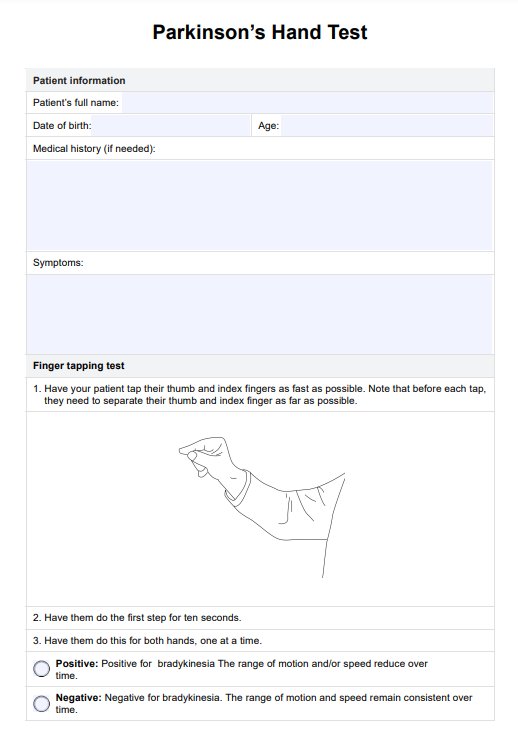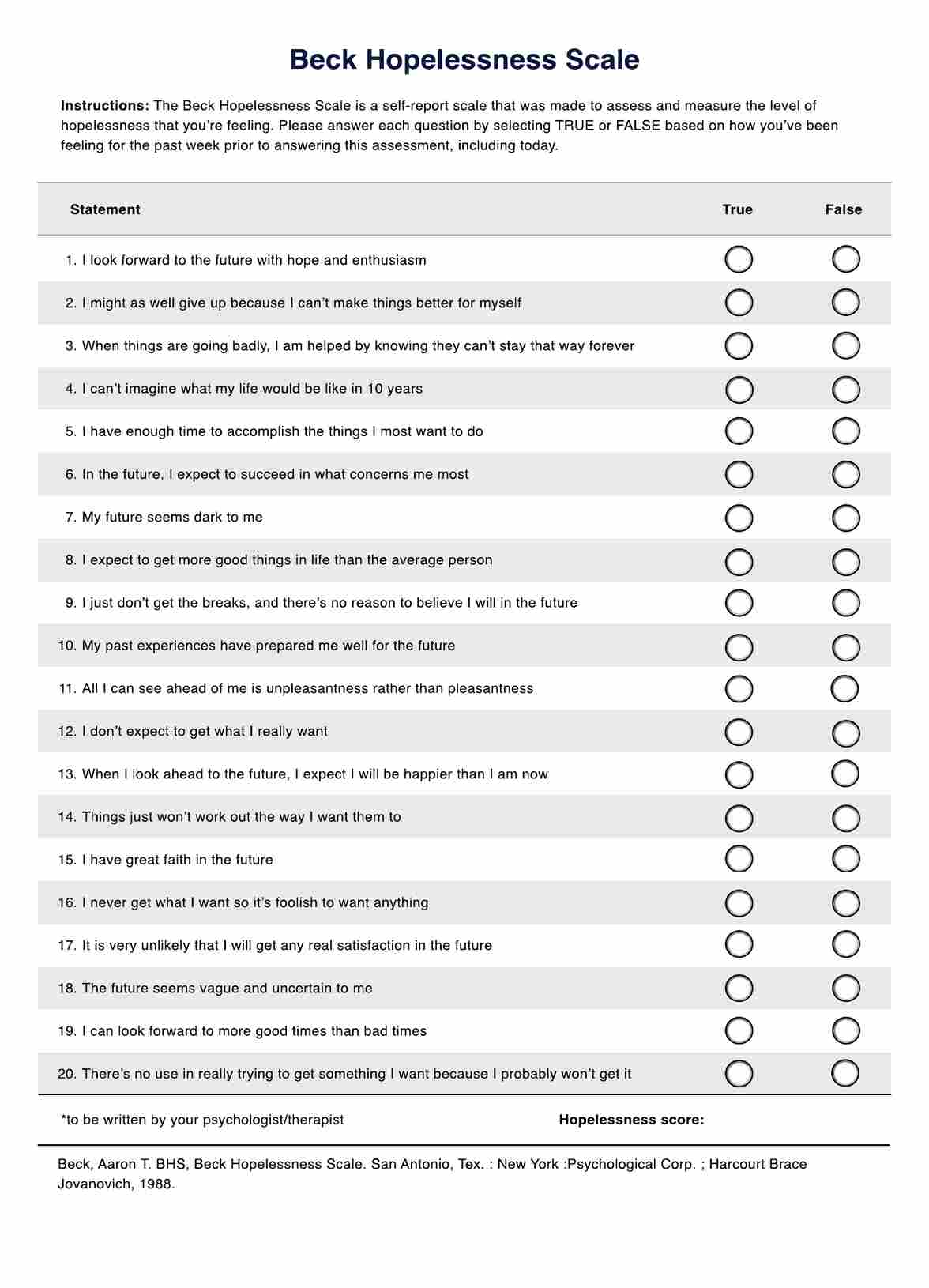Person-Centered Therapy Worksheets
Enhance self-awareness and personal growth with person-centered therapy worksheets.


What is Person-centered Therapy?
Person-centered therapy, conceived by the influential psychologist Carl Rogers, is a humanistic approach to psychotherapy that places paramount importance on the client's subjective experiences. Commonly referred to as client-centered therapy, this approach stands out for its non-directive nature, where the therapist provides a supportive and empathetic environment for clients to explore their thoughts and emotions freely.
Central to this method is the belief in the inherent capacity of individuals for self-discovery and personal growth when provided with an atmosphere of unconditional positive regard.
In person-centered therapy, the therapeutic process is collaborative, with the therapist refraining from imposing solutions or interpretations. Instead, the emphasis is on fostering self-awareness and self-acceptance and facilitating the client's journey toward fulfilling their potential. This approach to treatment has been influential across various therapeutic contexts and continues to be a cornerstone in counseling.
Person-Centered Therapy Worksheets Template
Person-Centered Therapy Worksheets Example
What are the core tenets of Person-centered Therapy?
The core tenets of person-centered therapy, developed by Carl Rogers, revolve around three essential principles: unconditional positive regard, empathic understanding, and promoting self-awareness. Unconditional positive regard emphasizes the therapist's acceptance and support of the client without judgment, creating a safe space for open exploration.
Empathic understanding involves the therapist comprehending and reflecting on the client's feelings and experiences, fostering a deep emotional connection.
Finally, promoting self-awareness encourages clients to explore and understand their thoughts and emotions, facilitating personal growth and autonomy. These principles collectively contribute to a therapeutic environment that prioritizes the client's subjective experience, fostering a sense of empowerment and self-discovery in the therapeutic process.
What are Person-centered Therapy Worksheets?
Person-centered therapy worksheets are valuable resources and tools designed to enhance the effectiveness of person-centered therapy, a humanistic approach developed by Carl Rogers. These worksheets provide therapists with structured ideas and techniques to facilitate a more interactive and personalized therapeutic experience for their clients. Grounded in the core principles of person-centered therapy, these resources aim to help clients explore their feelings, thoughts, and experiences in a guided and supportive manner.
The worksheets prompt self-reflection, encouraging clients to delve into their emotions and articulate their inner experiences. This process benefits clients who struggle to express themselves verbally, providing a tangible and structured framework for exploring their feelings. Therapists can tailor these worksheets to suit each client's unique needs, ensuring a personalized and client-centered approach.
For therapists, person-centered therapy worksheets offer a structured means of incorporating the core tenets of the approach, such as unconditional positive regard and empathic understanding, into their sessions. These resources provide a roadmap for therapists to create an environment that fosters self-awareness and personal growth.
By using person-centered therapy worksheets, therapists can enhance their ability to connect with clients on a deeper level and facilitate a collaborative and empowering therapeutic journey. Ultimately, these worksheets serve as practical tools that align with the person-centered philosophy, benefitting therapists and clients in the therapeutic process.
Examples of Person-centered Therapy Worksheets
Feelings exploration worksheet
This worksheet prompts clients to identify and articulate their current emotions. It provides a structured space for clients to express the range and intensity of their feelings, facilitating a deeper understanding of their emotional experiences.
Self-reflection journal
A journaling worksheet that encourages clients to reflect on their thoughts, experiences, and interactions between therapy sessions. This ongoing self-reflection tool helps clients track their progress, identify patterns, and set personal goals.
Empathy circle exercise
This interactive worksheet involves both the client and the therapist. It creates a visual representation of the empathic understanding between them. Clients and therapists can use the circle to annotate critical feelings and thoughts, fostering open communication.
Values clarification worksheet
Designed to help clients identify and prioritize their core values, this worksheet assists in aligning personal goals with these values. It encourages clients to explore what truly matters and how it influences their decision-making.
Positive affirmations board
This visual worksheet allows clients to create a personalized positive affirmations and self-encouragement board. It serves as a daily reminder of strengths, aspirations, and self-compassion, promoting a positive mindset between sessions.
How to use the feelings exploration Person-centered Therapy Worksheet:
- Choose a recent event: Select a current event or situation that triggered strong emotions. This could be a positive or challenging experience, but choose something that evoked a noticeable emotional response.
- Describe the situation: In the "Describe the Situation" section, briefly outline the details of the chosen event or situation. This sets the context for your feelings exploration.
- Identify your feelings: List the primary emotions you are currently experiencing in the "Feelings" section. Be specific and use descriptive words to capture your emotional state accurately.
- Rate the intensity: Assign an intensity rating from 1 to 10 for each listed feeling in the "Intensity Scale" section. This helps quantify and prioritize the strength of each emotion.
- Explore the reasons: Reflect on why you might be feeling each emotion in the "Explore the Reasons" section. Consider specific thoughts, events, or memories associated with each feeling.
- Note physical sensations: Acknowledge any physical sensations linked to your emotions in the "Physical Sensations" section. This could include tension, warmth, restlessness, or other bodily experiences.
- Identify expressive outlets: Consider healthy ways to express or cope with your emotions in the "Expressive Outlets" section. This could involve journaling, talking to someone, engaging in creative activities, or practicing mindfulness.
- Reflect on responses: Take a moment to review your responses. Reflect on the connections between the event, your feelings, and potential reasons for those emotions. Consider how you might approach expressing or coping with these feelings.
- Revisit as needed: The worksheet is a tool for ongoing self-reflection. Revisit it whenever you experience intense emotions or want to explore your feelings more deeply. Over time, this process can contribute to a greater understanding of your emotional landscape.
Download our Person-centered Therapy example here:

What are the benefits of using Person-centered Therapy Worksheets?
- Enhanced self-exploration: Worksheets provide clients with a structured framework to explore their thoughts and feelings. This enhances self-awareness by encouraging clients to delve into their emotions and reflect on their experiences in a more organized manner.
- Tangible progress tracking: Worksheets are actual records of a client's progress. Over time, clients and therapists can review completed worksheets to identify patterns, track changes, and celebrate achievements, fostering a sense of accomplishment and motivation.
- Customized and flexible approach: Person-centered therapy worksheets can be tailored to meet clients' needs and preferences. This flexibility allows therapists to create personalized interventions that resonate with the individual's therapeutic journey.
- Improved communication: Worksheets can enhance communication between clients and therapists by providing a structured platform for expressing thoughts and emotions. This can be especially beneficial for clients who struggle to verbalize their feelings spontaneously.
- Encourages active participation: The interactive nature of worksheets encourages clients to engage in their therapeutic process actively. This active participation fosters a sense of agency and empowerment, aligning with the person-centered philosophy of promoting self-direction.
- Supports goal setting: Many worksheets are designed to assist clients in setting and achieving personal goals. Clients can work collaboratively with their therapists to establish realistic and meaningful goals by clarifying values, identifying priorities, and breaking down larger objectives.
- Facilitates insight and reflection: Worksheets prompt clients to reflect on various aspects of their lives, fostering insight into their thoughts, behaviors, and relationships. This reflective process contributes to a deeper understanding of oneself and the factors influencing personal growth.
Commonly asked questions
The primary goal of person-centered therapy is to facilitate self-exploration, self-acceptance, and personal growth by creating a therapeutic environment characterized by empathy, unconditional positive regard, and genuine understanding.
Person-centered therapy stands out for its non-directive approach, emphasizing the client's autonomy and self-discovery. Unlike other treatments, it does not involve specific techniques or interpretations imposed by the therapist, focusing instead on creating a supportive space for the client's exploration.
Person-centered therapy is often effective for a wide range of psychological issues, including anxiety, depression, and relationship challenges. However, its effectiveness may vary depending on individual preferences and the nature and severity of the problem. Sometimes, clients may benefit from a more directive or specialized approach.


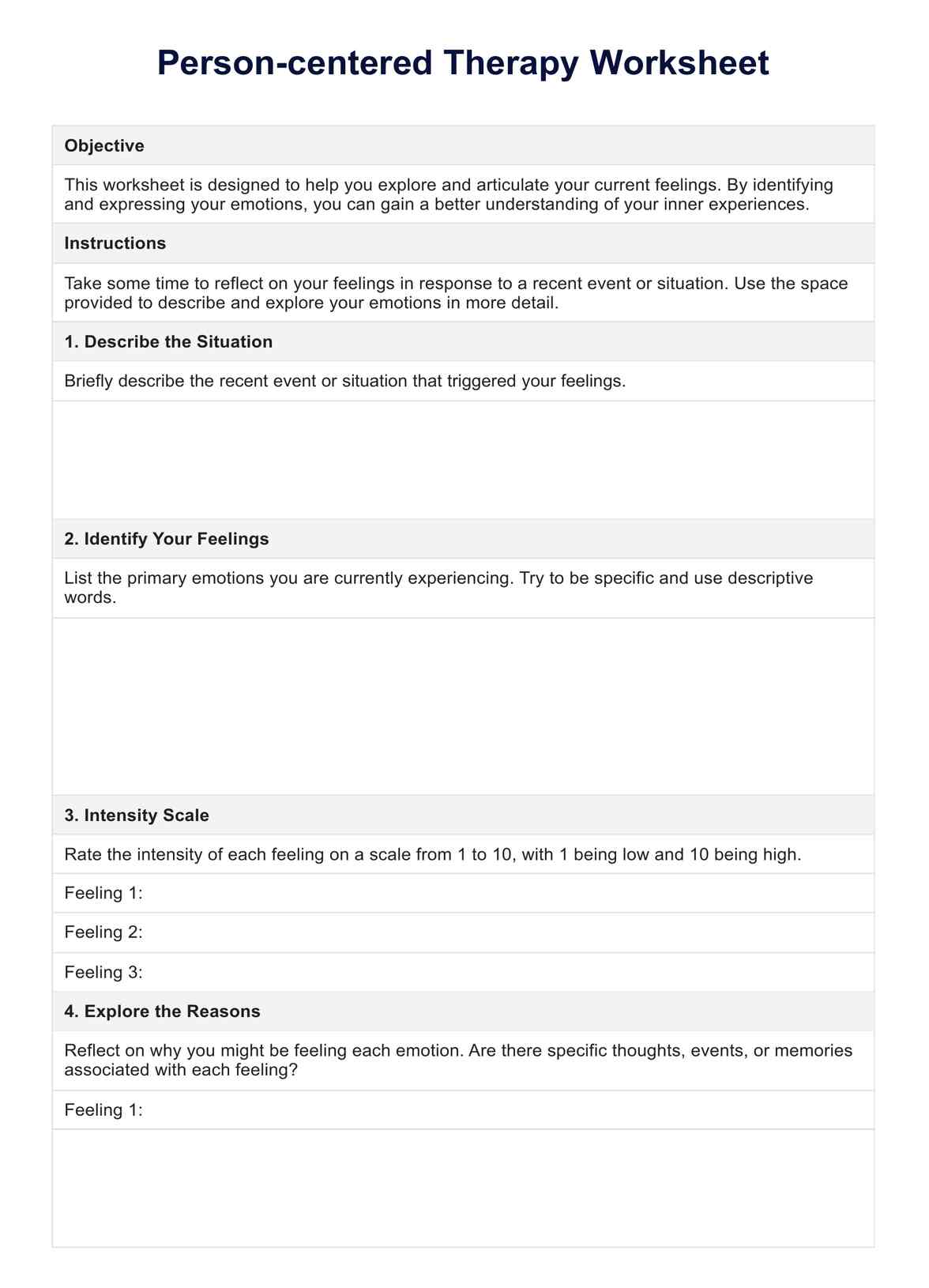
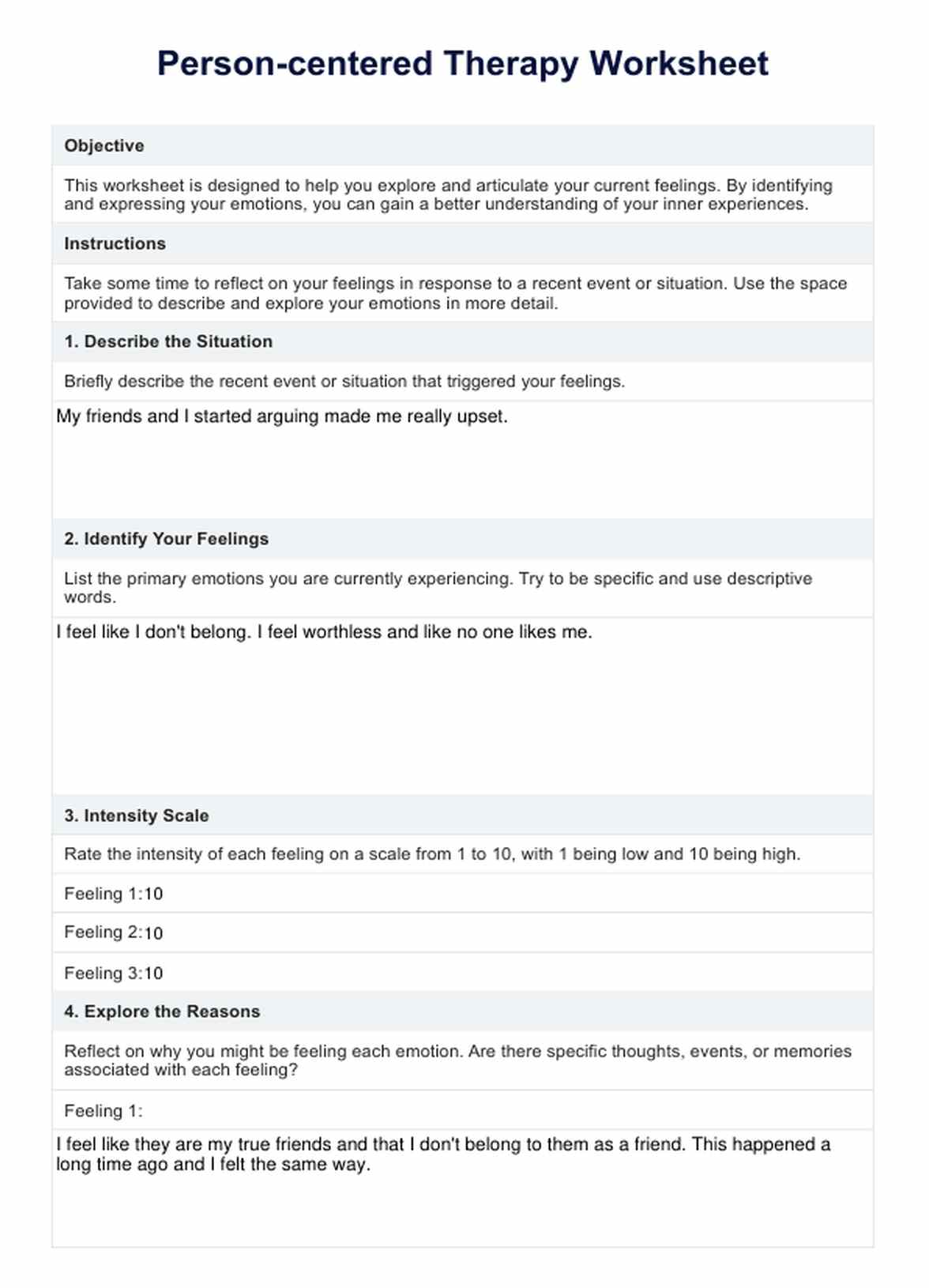


















-template.jpg)
























































































